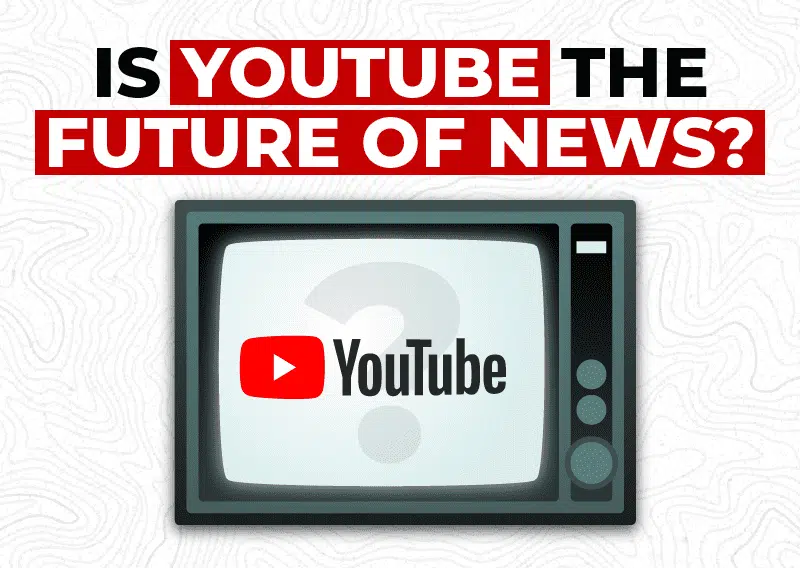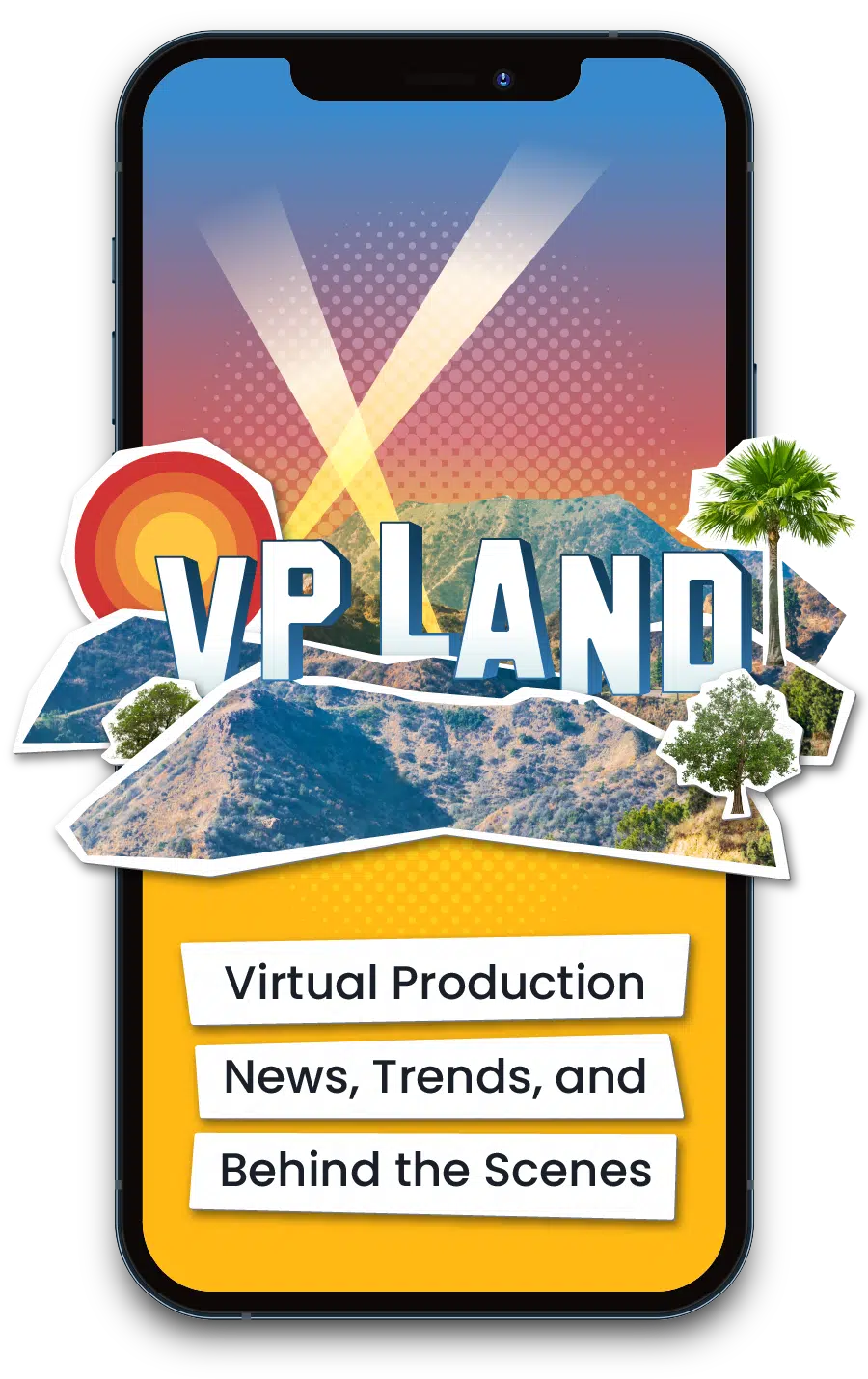Welcome everyone to Video Signals, a highlight show for entrepreneurs and creators bringing you 5 signals in the world of video and marketing.
You can watch the episode below or read on for the signals.
YouTube: The News Source of Choice by 25% of Americans
For our first signal, a reported 26% of American adults turn to Youtube to keep up with current events and other latest news, According to Pew Research.
49% of those surveyed reveal that they turn to established news organizations on YouTube, like CNN or Fox News.
42% said they get their news from independent news channels with no affiliation to a major news organization. And 9% opted for other organizations, like government agencies, advocacy organizations, and research organizations.
From the 26% who responded that YouTube was where they got their news from, 13% said that YouTube was the most important way they kept up with the news, while 59% said YouTube was an important way, but not the most important way.
So that means 72% did claim that Youtube was important, in one way or another, as to where they got their news from.
The majority of the respondents cited that they were totally open to the idea of YouTube being their news source, although some have raised slight concerns about political bias, potential misinformation, and the platform’s tendency to deny independent content creators advertisements embedded in their videos.
Another interesting stat is out of the all the channels analyzed, 44% are personality driven, meaning the channel is built around a single person rather than an organization, but out of the pool of independent channels included in this study, 70% are centered around an individual or YouTuber. Think Philip DeFranco.
Two things here. Expect to see this 26% number only increase as Gen Z, which is basically YouTube native, gets older and more interested in current affairs and turns to the platform they always turn to for video content.
And for personality driven independent channels, expect to see more of that, especially with the rising popularity of Substack and journalists taking an individual route direct to subscribers. I think we could see a crossover from people that deliver written content to delivering video content.
Hopin Acquires Topi for the future of Hybrid Events
Hopin, the all-in-one live events streaming platform, has just acquired Topi, the networking app that helps connect people attending in person events.
Hopin has exploded this past year as a go to one stop shop for organizing and hosting live virtual events. Their platform features main stages for up to 100,000 viewers, breakout rooms, 1-on-1 chat, expo booths, and more. It’s flexible enough to host an event from a webcam or connect to third party encoders for broadcast level streams.
Topi helps digitize in person event documents, such as catalogs and schedules and integrate all the live event info on its app. Topi’s advantages include geo-location technology – meeting live or virtual attendees with shared interests – as well as high-level social networking features, and simplifying all event information into a few clicks.
Hopin’s acquisition of Topi signals confidence in some form of in person events resuming in 2021, with hybrid events being the starting point.
As Hopin CEO Johnny Bourfarhat says, “Hybrid events are going to be the future, we want to build the best events, not just virtual ones. We could have built Topi from scratch, but to move as fast as we want to move, we need to acquire.”
Hopin says this is just the beginning of acquisitions. It will be interesting to see how this develops into the future of events from a company that started digital first.
In a recent interview I caught with Bourfarhat on the Trends podcast, he noted two interesting things. First, the types of events that exist because that’s how the organizer makes most of their money will come back in person the soonest.
The other types of events put on by companies where the main goal might be something else besides revenue, like generating leads or engagement, will probably remain virtual for longer or for good.
The other thing was seeing huge online growth in events that never even thought about going virtual but did and now see it being better than in person, such as job fairs. Going online the pool of potential talent isn’t restricted by geography anymore.
From my own personal experience with Hopin, they drastically simplified the barrier to creating a dynamic virtual event, both with their ease of use and extremely affordable price point, that after organize events for other companies on the platform it left me thinking what else can I organize myself because it’s so easy to do and make something very exciting.
So it’ll be interesting to see how this duality plays out of both hybrid events and virtual events that never would’ve existed in real life due to a variety of barriers.
For more on virtual events check out our previous Signal on how Reuters is handling the future of their events with a hub and spoke model.
FiLMiC Pro Adds 10-bit SDR log v3 capture
FiLMiC Pro just released version 6.13 of their app, which unlocks 10-bit SDR capture with FiLMiC’s Log V3, but the 10 bit capture only works on the iPhone 12 and select Android phones.
Filmic Pro is the best app for turning your phone into a cinematic powerhouse and this just adds one more tool to the mobile cinematographer’s toolkit.
If you’re unsure about what 10-bit and LOG V3 mean, at its most basic it allows you to capture more image information in every frame so you can get higher quality video out of your phone.
Now this is different than the new iPhone’s 10-bit Dolby Vision HDR, which comes standard in the iPhone’s native camera app. While Dolby Vision gets a lot of dynamic range, Filmic allows you to shoot in Log, which is much better suited for color correction in post-production. You’ll get more shadow detail, higher color representation, and more natural gradation.
The version 6.13 release also comes with a free-to-download FiLMiC Pro LUTs packs like the deFLAT and the deLOG LUT. LUTs apply preset looks to the flat looking LOG footage you shoot, which speeds up the editing process if you don’t want to color correct your footage from scratch.
If you don’t already have it FiLMiC Pro is available for purchase on the app store for iPhone or Google Play for Android for a one-time fee of $14.99.
Live Streaming For Brand Building
At TechNode’s Emerge 2020 conference held in Shanghai last month, one sentiment stood out: live streaming for ecommerce has the power to build brands and not just make sales.
From a 3-experts panel that discussed, “Does live-streaming growth have a a ceiling?” the main takeaway was that livestreaming and ecommerce are not just about sales. It’s a great brand building tool.
The inclusion of live streamed videos in a company’s marketing strategy changes the way brands can interact with their customers. Likewise, it has the potential to attract new ones.
Live streaming is a multi-faceted strategy that not only showcases brands and products available for purchase online, it also brings about greater brand-name visibility that could help influence consumers with purchasing decisions.
Maggie Fu, a Chinese fashion influencer who now runs her own digital marketing company, reiterated that livestreaming engages viewers much closer than other forms of advertising.
According to Fu, With live streaming, there’s an entertainment aspect to it that attracts more viewers as compared to just making a hard-sell with typical ads. “People can see what you are doing, feel your personality through real-time interactions,”
Pablo Mauron of the Digital Luxury Group, another expert in the panel, highlighted that livestreaming adds high marketing value never seen before in the industry.
Mauron explains: “One of the key recipes of successful live streaming, if you talk about sales-driven live streaming, is the fact that the raw format delivers something that somehow appears as more trustworthy than something highly-staged and polished ”
If you have an ecommerce business and are thinking of experimenting with live streaming, especially in the US where live ecommerce is not that big, you don’t need to focus just on sales as an ROI indicator. It’s still a powerful engagement tool for current and prospective customers.
Vimeo To Be A Standalone Company
Vimeo is going to split off from its holding company IAC and become its own publicly traded company.
With Vimeo launching around the same time as YouTube, they’ve both taken different paths but have survived and thrived since the Web 2.0 boom, unlike some other video sharing sites. Remember Blip.tv? Google Video?
While not nearly as big as Youtube, Vimeo has positioned itself as the white label, filmmaker friendly clean video viewing experience. Plus a lot of other things. VOD platform. OTT in a box. Live streaming. Screen recording.
While 2020 has been a crazy year for everyone, it’s been a good year for video streaming, something that wasn’t lost on Vimeo, with a 44% increase in revenue from 2019.
Because of that, IAC is going to split Vimeo off into its own company.
Just goes to show despite YouTube’s dominance, there’s still room for a variety of video platforms and ways to deliver video content to consumers.
I always say if you want your content to reach the most eyeballs, put it on YouTube. If you need to cleanly host video on your site or monetize it, use Vimeo.
That’s all for this episode of Video Signals.
Subscribe to the channel to make sure you don’t miss future episodes.


